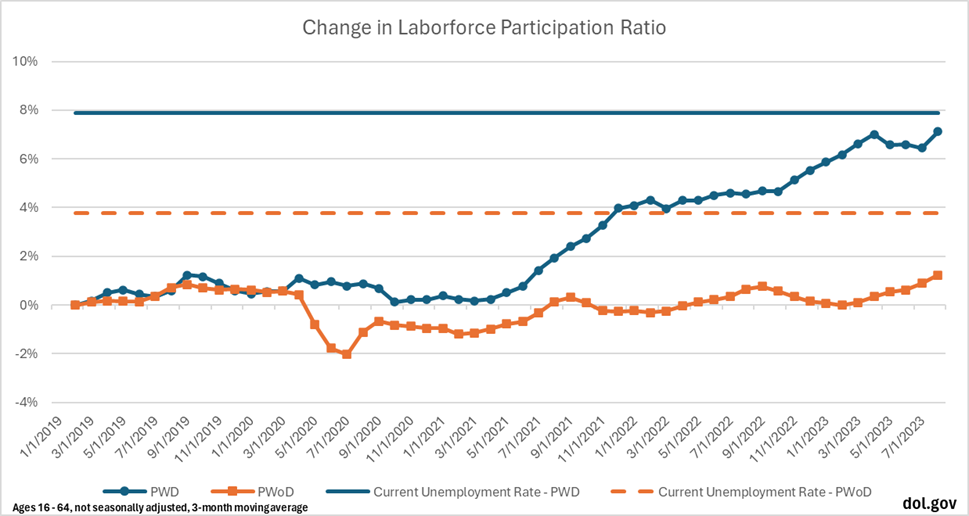In October, we celebrate National Disability Employment Awareness Month, highlighting the importance of "Access and Equity" as this year's theme. It's an opportunity to recognize and honor the contributions of disabled individuals while also examining the various consequences of the Disability Divide and how it impacts opportunity in society.
A job is an important part of all our lives. CES helps people find work that best matches their skills and interests. In a cooperative effort, CES and local businesses work together to provide inclusive jobs for adults with disabilities. If needed, CES’ staff are trained to provide job coaching and job development with a goal of maximizing independence and promoting productive lives in the community through employment.
CES encourages businesses to hire qualified, skilled employees who happen to have a disability. Employers will experience many benefits by hiring persons from this untapped labor market. This includes training for supervisors and co-workers, ADA consulting and training, task modification to accommodate individualized needs, and financial benefits.
LinkedIn put together an incredible study that we encourage you to take a look at called "Disability Status and Work- Employment and Leadership Trends in the US"

Here were the key takeaways:
• Members reporting disabilities are 1.5 times more likely that members reporting no disabilities to work in the Consumer Services sector (e.g., household and personal services, repair and maintenance, civil and social organizations) compared to those reporting not having disabilities, as well as 1.4 and 1.3 times as likely to work in Government Administration, and Education (respectively). They are 40% less likely to work in Real Estate; Oil, Gas, and Mining; Construction; and Wholesale.
• Nearly half of members who report having a disability are in entry-level positions, 6.8 percentage points higher than for members who report not having a disability. In contrast, 10.5% of members who report disabilities occupy director, VP, or CXO positions, compared to 13.6% for members who report no disabilities.
• Members who report disabilities are 3.8 percentage points more likely to not have a current job listed as members who report no disabilities, a gap that has stayed consistent over the last five years.
• Members who report disabilities were 5.5 percentage points less likely to be working in a senior position (manager or higher) in July 2023 than members who report no disabilities, an expansion of the gap from July 2018, when it stood at 4.1 percentage points.
• Members who report disabilities are more interested in remote positions: in August 2023, 53.9% of job applications from members with disabilities were for remote positions, while 45.6% of applications from members without disabilities were for remote roles.
In other findings:
In the United States, the unemployment rate is double for people with disabilities versus those without a disability (7.9% vs 3.8%) despite the highest labor force participation rate for people with disabilities aged 16-65 (41.2%) since records began. Factors such as subminimum wage practices and policies such as the Supplemental Security Income, which restricts how much people can make without losing benefits, creates higher unemployment for disabled people.

The gap is changing. Some good news is that people with disabilities are joining the workforce at a much greater rate. However, unemployment rates for those with a disability remain double that of their peers without a disability. Additionally, new data from LinkedIn sourced from disability self-identification shows that, in August 2023, 53.9% of job applications from LinkedIn members who self-ID with a disability were remote, compared to 45.6% of members without disabilities.
Though there has been some progress, there is much more to do. According to the World Health Organization, there’s been an increase in people with disabilities to 1.3+ billion people around the world. As businesses and organizations continue to work with nonprofits, policymakers, universities, and accessibility developers to help narrow the Disability Divide, we know that making workplaces more accessible, investing in accessibility, listening to employees, and promoting inclusive practices, collectively, can reduce the disability unemployment gap and create more opportunities for those with disabilities.
To learn more about what we do here at CES to empower our community members with disabilities p
lease visit www.ces-usa.com.
Sources:
